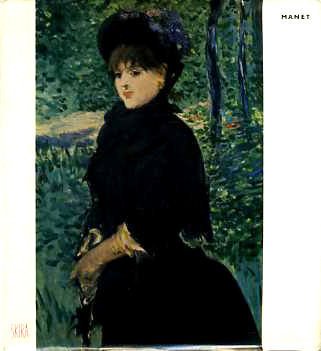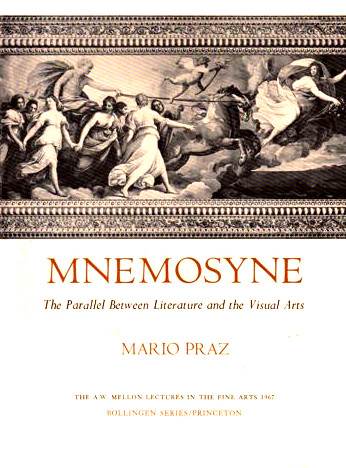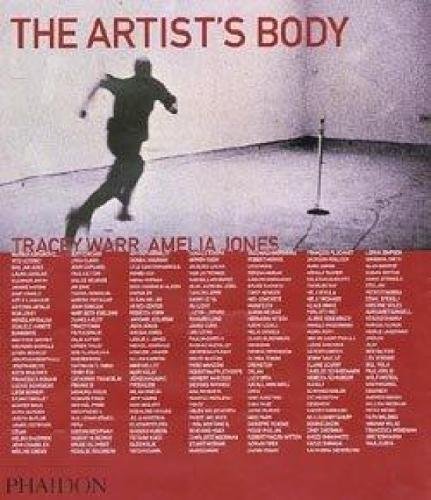Georges Bataille: Manet: Biographical and Critical Study (1955)
Filed under book | Tags: · art, art criticism, art history, art theory, biography, painting

Bataille’s introduction to Manet.
The essay also appeared as Manet. Études biographique et critique, Skira, Genève, 1955
Translated by Austryn Wainhouse and James Emmons
Publisher Skira, 1955
135 pages
via leninbert
Commentary: Anne McConnell (Equinoxes, 2004).
See also Michel Foucault: Manet and the Object of Painting (1971, FR, EN)
Comment (0)Mario Praz: Mnemosyne: The Parallel Between Literature and the Visual Arts (1970–) [English, Spanish]
Filed under book | Tags: · art, art history, art theory, history of literature, literary theory, literature, memory, poetry

In his search for the common link between literature and the visual arts, Professor Praz draws upon the abundant evidence of long mutual understanding and correspondence between the sister arts. Although parallels of theme and inspiration are plentiful, he is not primarily concerned with these. Rather, he examines the close relationship or air de famille between the expression of the arts in any given epoch.
Each epoch has “its peculiar handwriting or handwritings, which, if one could interpret them, would reveal a character, even a physical appearance.” Although handwriting is taught and some of its characteristics thus belong to the general style of the period, the personality of the writer does not fail to pierce through. Something of the same sort, the author proposes, occurs in art. The kinship of literature and painting rests on this circumstance: a work of art, whether visual or literary, must use the distinctive “handwriting” of its particular age, even as its originality pierces through this handwriting.
The likeness between the arts within various periods of history can ultimately be traced, then, to structural similarities — similarities that arise out of the characteristic way in which the people of a certain epoch see and memorize facts aesthetically. Mnemosyne, at once the goddess of memory and the mother of the muses, therefore presides over this view of the arts. In illustrating her influence, Professor Praz ranges widely through Western sources, both literary and pictorial. (from the dust jacket)
The A.W. Mellon Lectures in the Fine Arts, 1967
Publisher Princeton University Press, 1970
Bollingen Series XXXV, 16
ISBN 9780691098579
261 pages
Review (E.H. Gombrich, 1972)
Review (D.C., Spenser Newsletter, page 3, 1971)
Review (in Japanese)
Publisher (EN)
Mnemosyne: The Parallel between Literature and the Visual Arts (English, 1970)
Mnemosyne: El paralelismo entre la literatura y las artes visuales (Spanish, trans. Ricardo Pochtar, 1979, no OCR, via Daniel Ferreira)
Tracey Warr (ed.): The Artist’s Body (2000)
Filed under book | Tags: · art, art history, art theory, body, body art, happening, live art, performance, performance art

“Beginning with such key artists as Marcel Duchamp and Jackson Pollock, this book examines a selection of the most significant players who have used their bodies to create their art – among them, in the 1960s Carolee Scheemann, Rudolf Schwarzkogler, Yoko Ono; in the 1970s, Chris Burden, Ana Mendieta, Vito Acconci, Marina Abramovic; up to the turn of the millennium, Matthew Barney, Marc Quinn, Tracey Emin and Mona Hatoum.
Survey. Amelia Jones, among the world experts in the field, discusses performance and body art against the background of social history. She examines the breakdown of barriers between art and life, visual and sensual experience – how artists have expanded and renewed the age-old tradition of self-portraiture, moving art out of the gallery into unexpected spaces and media.
Works. Each image is accompanied by an extended caption. The book is organized thematically:
“Painting Bodies”, concerns work that shows the trace, stain or imprint of the artist’s body in response to the paint-on-canvas tradition.
“Gesturing Bodies”, examines artists who transform the body – its acts, its gesture – into art; gesture, behaviour and situations are used in place of art objects.
“Ritualistic and Transgressive Bodies”, looks at work which uses the body to enact challenges to the social expecations of the body, often in rituals that perform a cathartic function. Mutilation and sacrifice are used to rupture personal and social homogeneity.
“Body Boundaries”, examines boundaries between the individual body and the social environment and between the inside and outside of the body itself.
“Performing Identity”, looks at issues of representation and identity.
“Absent Bodies”, explores absence and the mortality of the body through photography, casting, imprints or remnants of the body.
In “Extended and Prosthetic Bodies”, the body is extended through prosthetics or technology, to explore cyberspace and alternative states of consciousness.
Documents. Parallel to the illustrated works of art, this section combines texts by critics who shaped the movement, from Lucy R. Lippard to Thomas McEvilley. Alongside these are writings by philosophers and thinkers such as George Bataille and Gilles Deleuze who have contributed on a theoretical level to the discussion around the body – a prevalent theme in twentieth-century cultural theory.”
Edited by Tracey Warr, with a survey by Amelia Jones
Publisher Phaidon Press, London, 2000
ISBN 0714835021, 9780714835020
304 pages
Reviews: James Hall (London Review of Books, 2001), Barry Gewen (NYT, 2005).
PDF (section Works pp 48-189 missing, 52 MB, no OCR, updated on 2022-8-30)
Comments (5)
